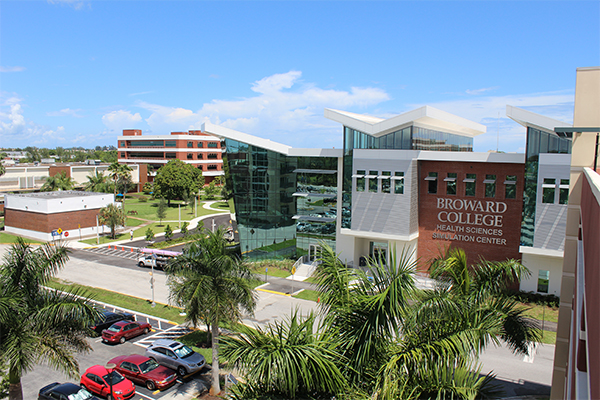Patti Barney’s career at Broward College began when she was a computer science student in the early 1980s. At the time, there were no personal computers, no library computer stations, and no internet. “Students weren’t learning digitally at all,” Barney says. “Everything was notebooks, pen, and paper.”
But for over three decades, Barney has been working to shift the school’s digital landscape. After graduating from Broward, she applied for a full-time programming position at the college. She worked her way up the ranks, becoming the vice president of IT in 2004. But despite her focus on technology, Barney’s passion has always been for serving the students, the staff, and the business. “I’ve been fascinated my whole life about making things work better, faster, and smoother,” she says. “Those were the things that really excited me the most.”

As part of Broward’s five-year strategic plan, Barney’s Innovation team is creating a digital storybook that will help faculty, staff, and administrators understand the college’s digitalization strategy. “We want to ensure that people understand what digitalization means,” she says. “It’s not about technology; it’s about the experience a student has in a moment.”
The storybook has three volumes—Start, Succeed, and Soar—which show the three stages of a student’s career, from recruitment to enrollment to graduation. Within each volume are chapters that revolve around functions such as interviewing and job placement, and within each chapter are digital moments that show specific ways in which technology can be used to improve student experience and success.
Upon enrolling, students choose from eight guided pathways, also called metamajors, which are defined by the state of Florida. The digital platform EAB Navigate guides students through the enrollment process, using predictive analytics to give users real-time feedback.
In 2013, Barney’s team began transitioning the enterprise resource planning system from the one they had built in the 1990s to Workday. Like EAB Navigate, Workday uses automated processes to proactively engage and inform students, from recruitment through graduation. When a prospective student reaches out, Workday automatically sends them electronic information about the college and links to apply. When students are accepted, the system sends a welcome email and a list of next steps, such as completing financial aid forms. At this point, the student is paired with an advisor who contacts them to set up an in-person meeting.
Workday has changed things for recruiters as well as students. With the previous system, potential students received a simple confirmation email and follow-ups came in the form of robocalls. Recruiters had little access to student progress information or data to indicate which approaches worked best. Now, dashboards alert recruiters when a potential student has stopped progressing through the enrollment process. A recruiter can then reach out to the student and answer any questions that they have about the process
Along with changing the technological tools, Barney and her team are also changing the culture around digitalization. As part of their strategy, the IT Analytics staff has joined the institutional research department to create a data ambassador program made up of employees from around the college. The first cohort of ten ambassadors is completing a Michigan State master’s certification program in business analytics to prepare them to better use and visualize the data that they gather.
Although administrators have long had access to student data and the ability to run reports, the use of predictive analytics is new. “There was a culture of evidence, but there was never a huge desire to question it,” Barney says. Using tools such as Microsoft’s Power BI data visualization platform, the ambassadors can get the information that they need to understand patterns and replicate results.
Recently, Broward partnered with CSPI as its managed services provider for all infrastructure and datacenter operations, and are now in the process of transitioning to a private cloud. “The constant struggle to hire and retain skilled talent is no longer a concern, and we have significantly improved our level of systems, network, and security expertise through this partnership,” Barney says.
As they continue to automate and move more services to the cloud, the IT department can focus time and resources on creating personal connections to enhance the digital culture. They’ve created “genius lounges” where faculty and staff can meet with IT team members and ask questions about available technology. “We have made great progress in terms of building relationships with faculty,” Barney says. “Why do we have thirty people that are fixing issues and responding to help tickets? Let’s automate or outsource traditional IT functions and then take these brilliant IT professionals and give them the soft skills that they need to be in front of people, inspiring others to be more proficient with the technology that they use each day.”
After spending her career at Broward College, Barney will leave the IT department in November 2018. She has been working with her successor to pave the way for the strategies of the future—to find and train those who have the skills to look beyond the technology and to the people and systems they are serving. “We don’t need basic programmers,” she says. “We need a whole different skill set.”
